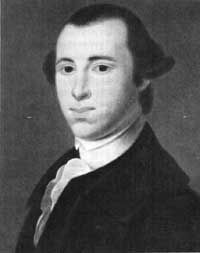Thomas Heyward, Jr. was an American judge, a delegate to the Continental Congress for South Carolina, and a signer of the Declaration of Independence. Heyward did not just fight the battles of the political world, but also participated in the war. He lost everything for this country so that we might gain everything from it.
Early Life & Education Abroad

Thomas Heyward, Jr., signer of the Declaration of Independence
Public domain image.
Thomas Heyward, Jr. was born in July 28, 1746. He was educated at home as a boy, but when he was grown, he travelled to England to study law. It was while he was studying abroad that he discovered the prevalent belief that British colonists were second-class citizens, inferior to native-born Englishmen. This injustice rankled him.
He went on to travel Europe, and grew disillusioned with the luxurious lifestyle Europeans sought in contrast with the hardworking and simple farmers he knew from America.After completing his studies, Heyward became a member of the Honourable Society of the Middle Temple. He then returned to America with a mindset prepared for separation from England.
In 1772, Thomas Heyward, Jr. married Elizabeth, the daughter of Col. John and Sarah Gibbes Matthews. Together they had 6 children, but only one son survived to see adulthood.
Politics
When the Stamp Act was declared, Heyward was one of the loudest opponents. He quickly rose in prominence as an outspoken Patriot, much to his Loyalist father’s shame. He was elected into the General Assembly and from there, in 1775, Thomas was elected to the Continental Congress at 29 years old. The following year, he signed the Declaration of Independence, and set events into motion for the Revolutionary War. His father warned him of the possible consequences, but Thomas didn’t care, and the two eventually reconciled before his father died in 1777.
Military & Captivity
In 1778, Thomas Heyward, Jr. returned to South Carolina after his father’s death to carry on the family plantation, though continued in politics a little. His signature is on the Constitution precursor—the Articles of Confederation. After his return home, he took on the command of a small group of militia artillery. He sustained a significant gunshot wound, but it healed, leaving only a scar.
During the siege of Charleston, Thomas was taken prisoner by the British. As he had been one of the leaders of the revolution, he, with several others, were transported to St. Augustine, while the other prisoners were confined on board some prison ships in the harbour of Charleston. He didn’t let it get him down. To keep his spirits up, he wrote a patriotic verse parodied off of “God Save the King” called “God Save the 13 States” that grew in popularity until most of the colonies had heard it. He also was nearly killed en route to Philadelphia where he would be released from captivity. He fell overboard the ship, but he held on to the rudder until help came. He survived, but his plantation was destroyed and his slaves and other possessions were carried off.
When he was getting ready to be released in 1782, his pregnant wife traveled to Philadelphia to be with him upon his release. While in Philadelphia, Elizabeth went into labor and died in childbirth. Thomas was heartbroken, and did not remarry until 1786, when he took another Elizabeth, the daughter of Col. Thomas and Mary Elliot Savage to be his wife. Together, they had 3 children, and fortunately, all lived to adulthood.
Final Years
Thomas continued to be a judge after the death of his wife and his release from prison. He worked to help his beloved South Carolina produce a state constitution and served as judge, but decided to retire in 1798. He spent his remaining years with his family in South Carolina. Thomas Heyward, Jr. died on March 6, 1809, having lived a rich, fulfilling life.


